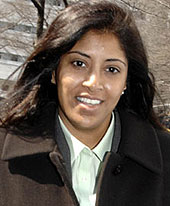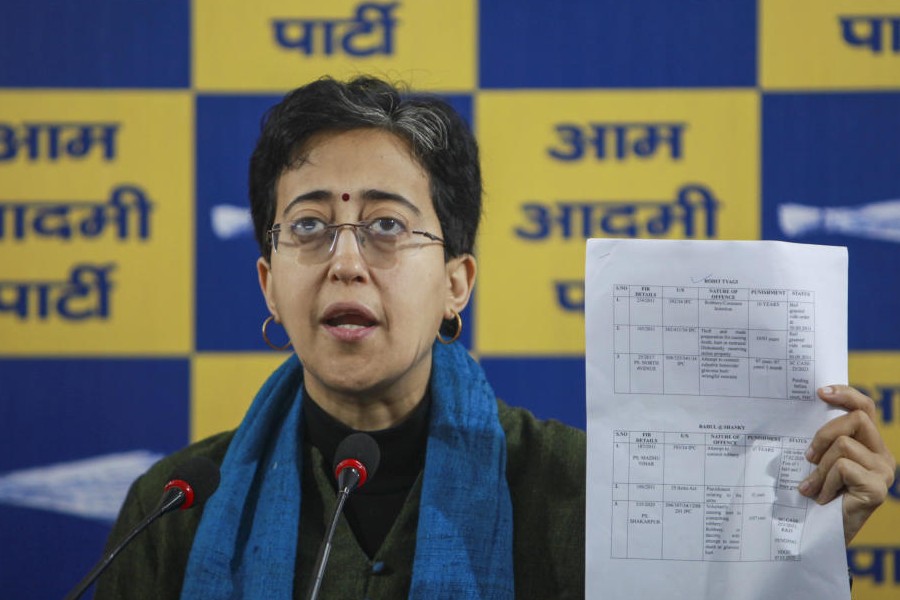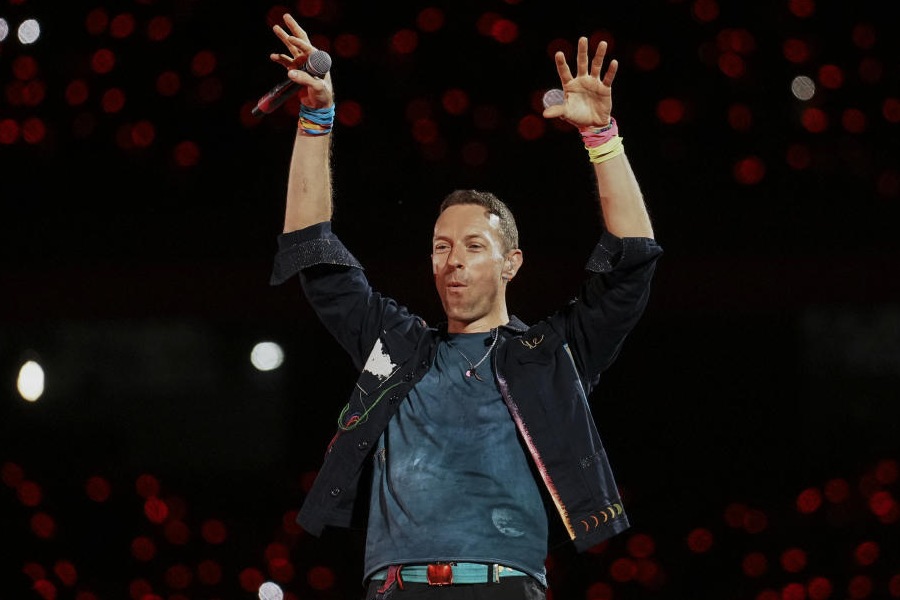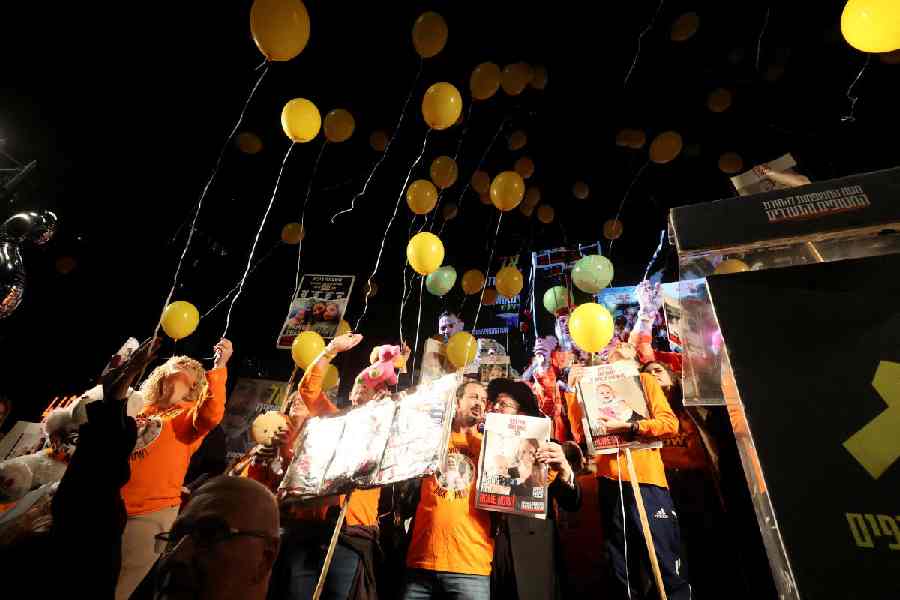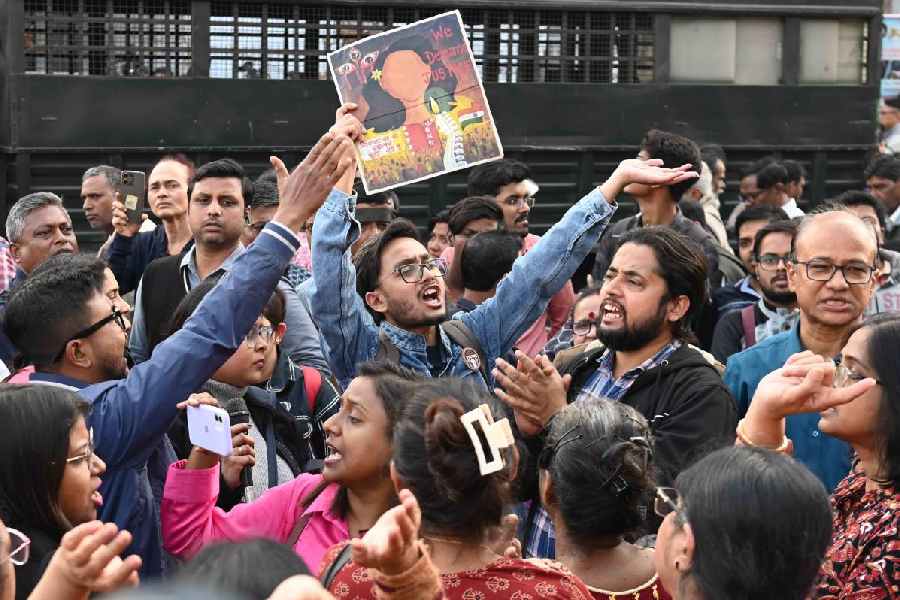 |
| Lina Sinha |
hyhyhyAkshay was a reluctant traveller and he picked the last seat on the bus to prove his point. He sat sulking by the window, unlike his other classmates, wild with the excitement that’s usual for 16-year-olds. But excitement he got. When Sheena, the 24-year-old trip organiser, picked the seat next to him, the trip just got better.
Over the next couple of days, Sheena made sure they shared the same lonely loft in the vacation camp. And, of course, they shared more than just dirty jokes and teen talk. Sheena got her pick and Akshay got his kick. Sounds like a fun trip, but it’s not.
Incidents of adult women indulging in sexual relationships with minor males, shockingly, are not skeletons in the cupboard anymore. Especially now, with Lina Sinha (picture on right), a 40-year-old NRI school principal, who was sentenced to a 14-year jail term by a US court for having sex with a 13-year-old.
The most common male reaction to “Lusty Lina’s” amorous activities was, “Wow, why didn’t I know her when I was 13.” But experts warn that it’s not funny. Sexual abuse of young boys is no more a fantasy. It is a reality that parents have to deal with. “Right after the Lina story, I read a story about a woman abusing a nine-year-old boy in Chennai. Suddenly, they are coming out of the woodwork,” says Vidya Reddy, programme facilitator, TULIR-Centre for the Prevention and Healing of Child Sexual Abuse.
But who are these women? The most commonly held notion of a woman abuser is of a powerful, independent predator, who skulks around in dark alleys, waiting to pounce on unsuspecting boys. But it might be a misplaced idea. “It is a wrong notion. Powerful women have a lot of other options. Mostly women abusers are close relatives, domestic help, parents’ friends etc,” says Neelam Matai, programme manager, Save the Children, India.
Most psychiatrists and social workers agree. It is no secret that most abusers enjoy a trusting relationship with the victim. In fact, a 2007 report on child abuse by the ministry of women and child health says that sexual abuse is more prevalent in upper and middle class families. Also, among respondents, 48 per cent of boys and 39 per cent of the girls faced sexual abuse.
“It is very common in Mumbai,” says Matai. “Older women would lure young boys from the nearby slums, feed them, make them happy and then take them to Mumbai local platforms or trains and exploit them. On each of our night rounds, we found many. It is increasingly coming out in the open in Delhi also.”
Reddy though cautions that it is dangerous to profile an abuser as they could come from any walk of life and there really is no way to recognise an abuser by characteristics, though past patterns of behaviour can be used as a cautionary measure. But it is hard to say whether such incidents are on the rise or if they are just getting reported more. Matai adds that reporting of such abuse is low.
The case of Suraj, a nine-year-old boy who was being sexually exploited by a classmate’s mother, came to light because of an observant mother. Intervention by Swanchetan, a Delhi-based non governmental organisation that supports victims of abuse, finally discovered the truth. “After interviewing both of them, we found that the woman was sexually abusing the boy. The boy is in counselling with us,” says Rajat Mitra, director, Swanchetan.
Suraj, however, did not think of telling his mother about his relationship because he knew it wasn’t right. He trusted his abuser implicitly. Also, having recently lost his father, he saw the relationship as an antidote to his grief. “It is very common for older women to take advantage of children emotionally and physically. In Suraj’s case, she filled in the void left by his father’s death,” explains Mitra. Also, many abusers do not view it as a crime, as they are women.
Sheena, for instance, is unapologetic about her “fling” with Akshay. “The moment was right and it wasn’t emotional. He called the week after to talk about his exams and I really didn’t care. That was the end of it,” she explains. Even Suraj’s abuser told Mitra, “Why don’t you look at my life and me as a victim?”
Mitra explains that mostly such relationships are power games. “Abusers view themselves as victims and sometimes they are. They exploit others to gain complete control over a minor to rid themselves of the victimisation,” says Mitra.
Neither do many of the victims view themselves as such. Elaan, a Calcutta-based organisation dealing with child abuse, is currently counselling a 14-year-old boy who is “involved” with a 47-year-old woman, his teacher. According to its founder, Pranaadhika Sinha, the boy had approached Elaan seeking guidance. “He didn’t really consider himself to be a victim of abuse. In fact, his friends consider him to be a ‘human God’ having a relationship with an older woman and a teacher,” explains Sinha. The “relationship” started with the teacher not only giving him tuition but expensive gifts, including music and films. The child is also doing very well in school.
But Sinha points out that the abuse can lead to severe psychological disorder in the future, including his inability to have relationships with women his own age. “It’s also about conditioning. Boys grow up, knowing that they are sexually more powerful and they are usually the abusers and not the victims,” explains Matai.
Ripples of an abusive relationship in the childhood can be felt throughout one’s life. “The effects can be myriad. From lack of assertiveness, avoidance of confrontational situations, post-traumatic syndrome, self esteem issues, depression — all of these can fester,” says Samir Parikh, chief, department of mental health and behavioural sciences, Max Health. But frequently, while in the relationship, boys might not understand that they are being abused. Adolescence is rife with sexual experimentation and a nascent awareness of one’s sexuality. “During this time of experimentation, it could be that the child also longs for attention and excitement. Then, it is very easy to fall prey to abuse,” says Mitra.
Also, because social mores espouse the dominance of males over females, minor boys don’t realise it when they are the victims. That is just the scenario in one of the cases Sinha is dealing with, of a 12-year-old boy and his 52-year-old woman teacher. She cooks for him, buys him presents and gives him great marks. And they have sex.
“When boys are abused, they don’t often feel like victims, but like the abuser. He feels he is exerting power over her and she makes him feel like she is taking care of him, physically and emotionally,” says Debashis Ray, a Kolkata-based psychiatrist. He adds, “Young boys are also less likely to report sexual abuse because it will be perceived as a weakness.”
Not just socially, legally also child sexual abuse of boys is given short shrift. In India, sexual harassment falls under the purview of section 354 of the Indian Penal Code, which is referred to as “Violation of a woman’s modesty.” But what happens if the victim is a boy? Child sexual abuse, on the other hand, is covered by section 375 of the IPC, which deals with rape. But most child abuse workers agree that rape is not the only abuse a boy can go through. “There are a million other ways a child can be exploited. Let’s hope the Offences against Children bill will cover all sexual acts against children in a gender neutral manner,” says Reddy. The bill might come up in the monsoon Parliamentary session.
Experts agree that legally, socially or physically, childhood has to be protected, whether of a boy or a girl. While it is true that the latter are more at risk, boys are equally vulnerable. And if steps are not taken to fight abuse, boys might never be boys again.

